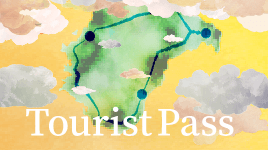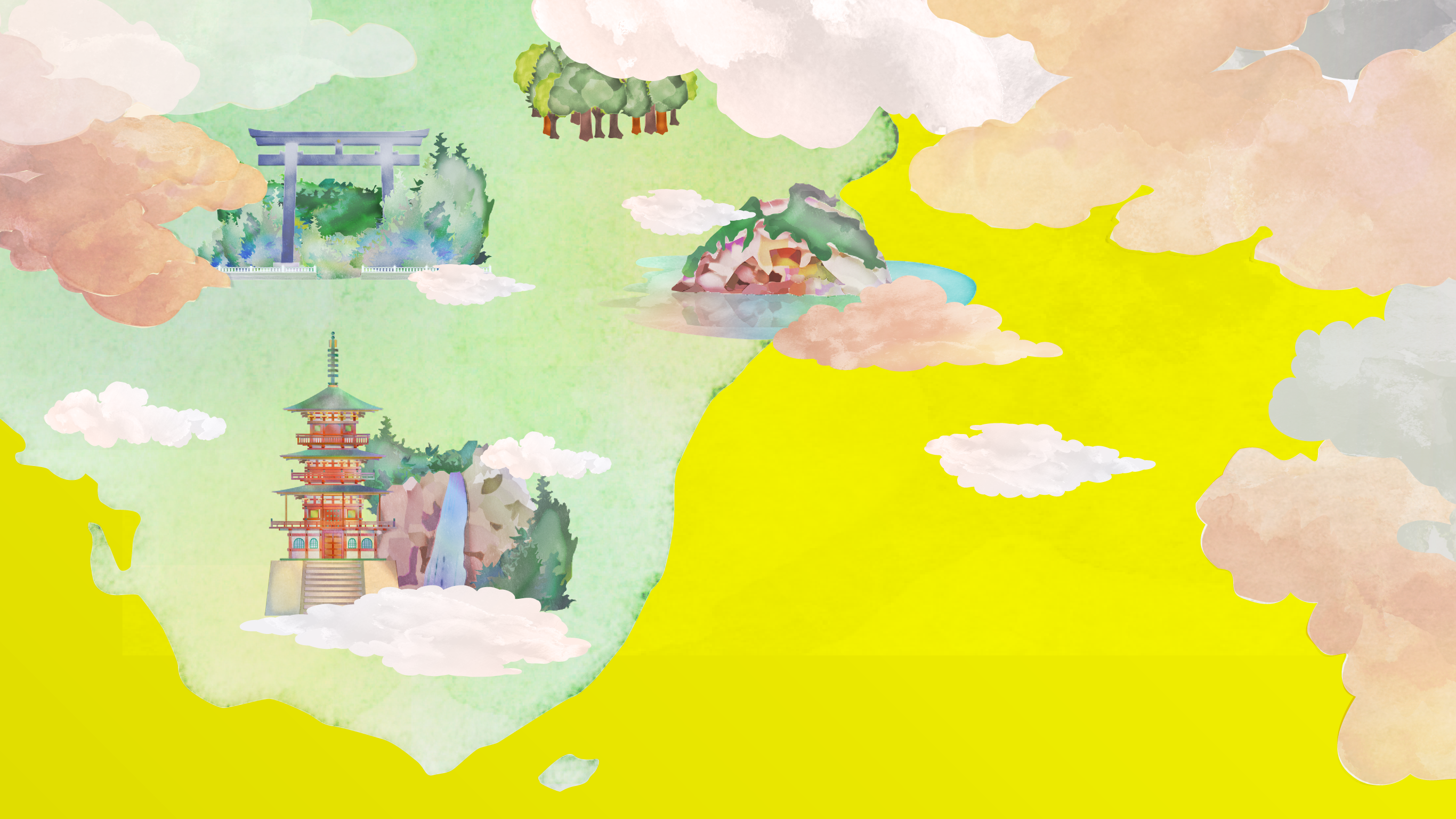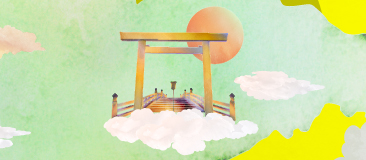Die once in the Kii Mountain
As we travel south by train from Ise along the coast, the mountains close in on the sea, and the flatlands are extremely few, this is how we know that we are entering "Kumano" - a mountainous area where gods and Buddha reside. Kumano, a region in the southern part of the Kii Mountain filled with faith, has been known by that name since the time of mythology. Old records tell us that Kumano was recognized as a place of "death”. In the oldest example, the goddess Izanami-no-mikoto, who gave birth to the nation, was burned to death when she gave birth to the god of fire. The place where her body was buried was said to be Kumano. Emperor Jinmu, the first emperor of Japan, entered Kumano in search of a place to rule the country, but was poisoned by the Kumano gods and fell into a coma. When he was eventually awakened by the power of Amaterasu-Omikami, he asked himself.
"Why have I slept so long?"
Emperor Jinmu died here once. However, he was reborn with the blessings of the gods.
In the medieval tale "Oguri Hangan," a man named Oguri was poisoned and fell into Hell
but was resurrected on Earth by the king of the underworld. However, when he was left with only bones and skin and was unable to move, the people who could not bear to look at
him sent him back to Kumano, where he was reborn after soaking in the “Tsuboyu Onsen in Yunomine” . Kumano is recognized as a place where one dies and comes back to life anew.
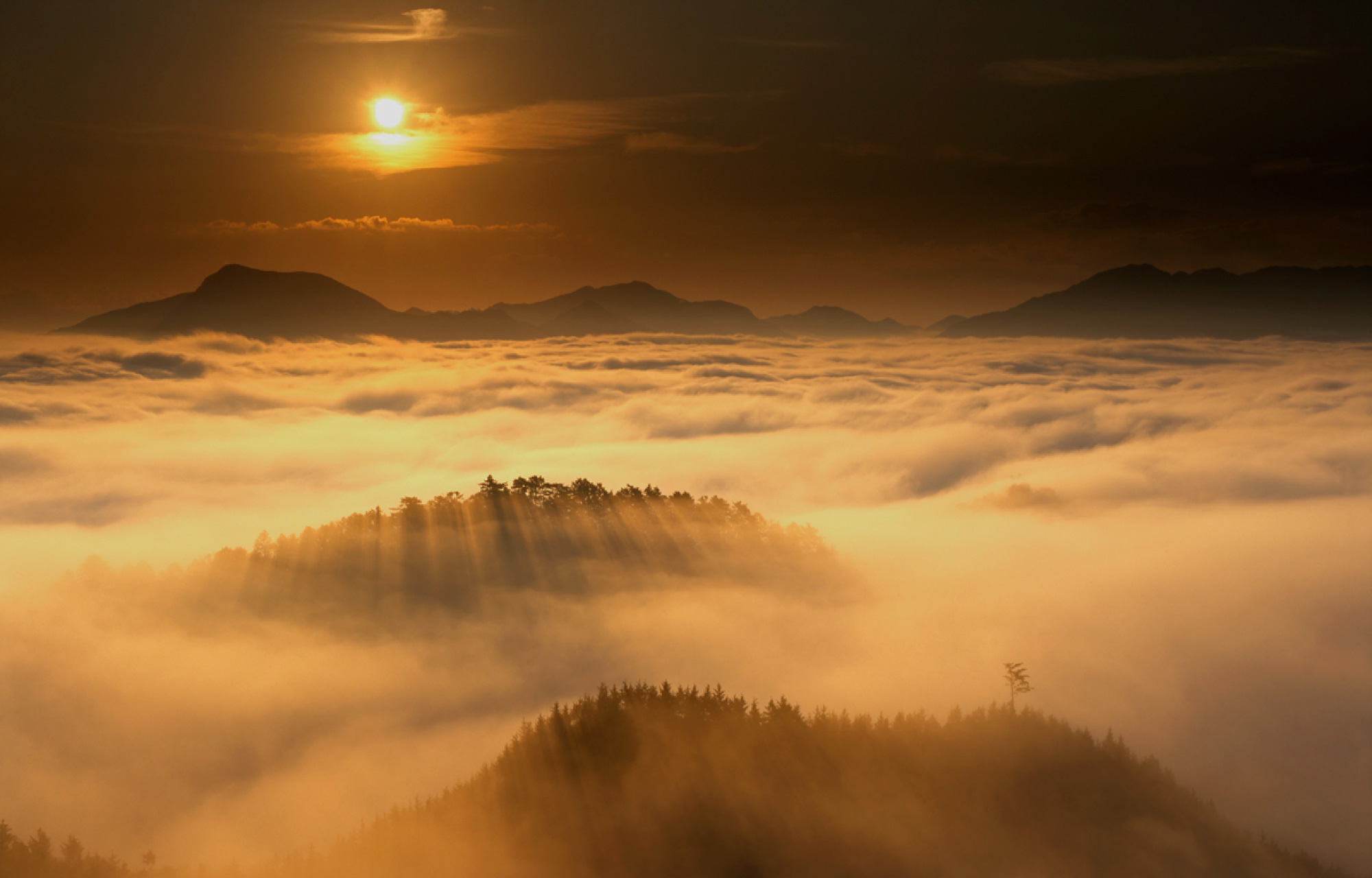
Kumano, located in the depths of the Kii Mountain, must have made people feel as if they were returning to their mother's womb. In Japan, there is a religious tradition called
Shugendo, in which people go into the mountains to strengthen their bodies and minds, find the gods and Buddha in nature, and acquire supernatural powers. Shugendo practitioners
who have exhausted their energy and physical strength in the mountains are considered to have died and are "reborn" after completing their ascetic training. Many of these
practices have taken place in Kumano. In other words, they do not enter Kumano to die, but to be reborn and live again, making it a positive sanctuary.
When Buddhist thought
entered this place of rebirth, Kumano came to be thought of as a "Pure Land" where the Buddha lives. This led even non-traditional practitioners to visit Kumano.
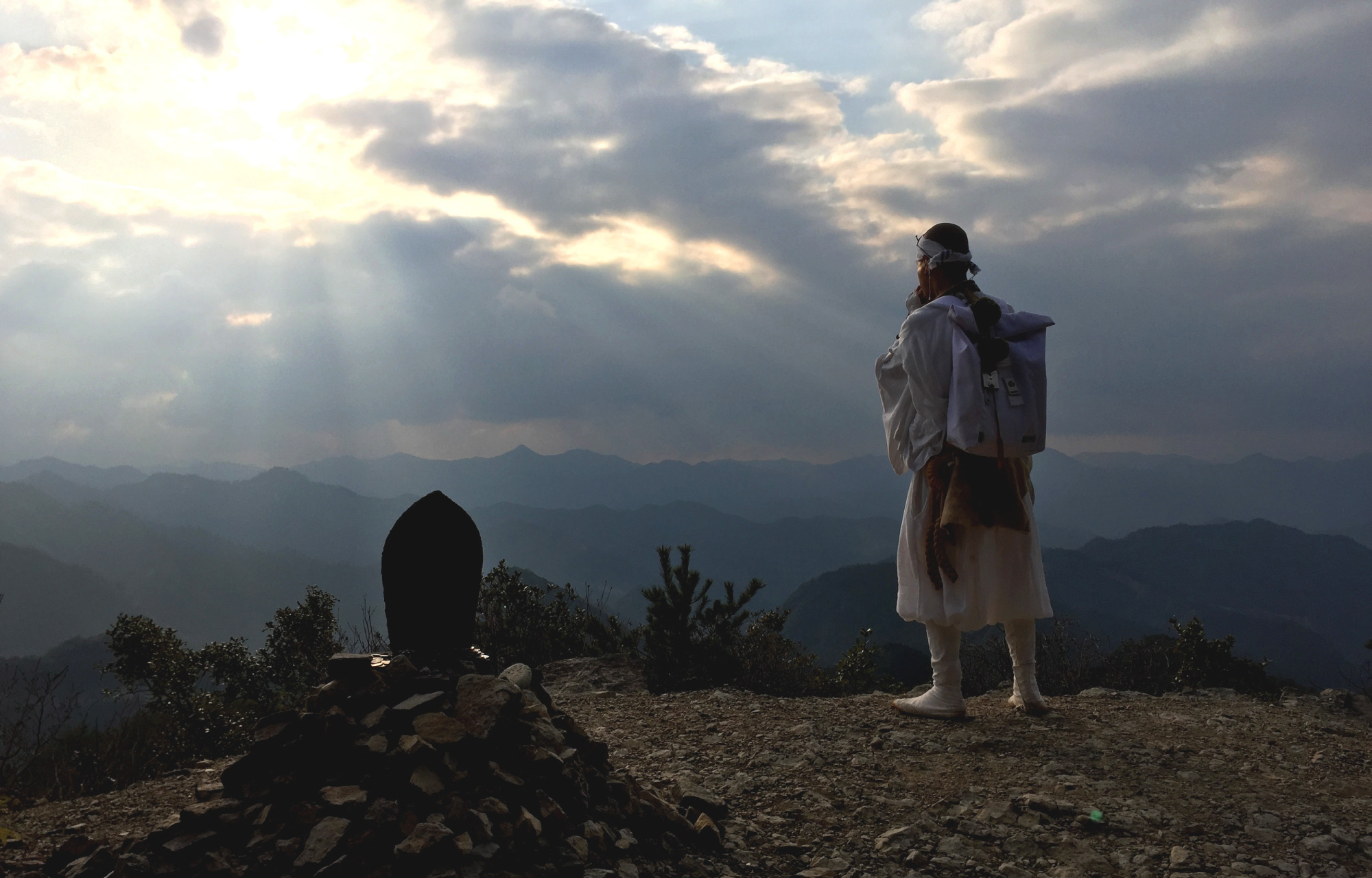
"Pilgrimage to Kumano" like a procession of ants
About 1,000 years ago, it was believed that Japan had entered a "Latter Day of the Law" period in which the teachings of Buddha would cease to exist, and it was also a time of
upheaval as samurai warriors began to seize power. People anxious about their lives traveled to Kumano in search of an encounter with the Buddha. Their first destination was the
Kumano Hongu Taisha Grand Shrine. Located at the navel of Kumano, countless steep pilgrimage paths were built with this shrine as the goal, and the people proceeded onward,
panting for breath. It was believed that the more difficult the pilgrimage was, the more benefits it would bring.
The paths to Kumano were gradually improved as royalty and
aristocrats made repeated pilgrimages to the temple, overcoming many difficult places.
Like Ise, Kumano also experienced a pilgrimage boom in the Edo period (1603-1867), and
the pilgrimage route was called "the ants' Kumano Pilgrimage" because worshippers formed an unbroken line like a parade of ants. The pilgrimage routes, as well as temples and
shrines, are considered to be a form of heritage that conveys the history of faith, and these sites are registered as a UNESCO World Cultural Heritage site as "Sacred Sites and
Pilgrimage Routes in the Kii Mountain Range”.
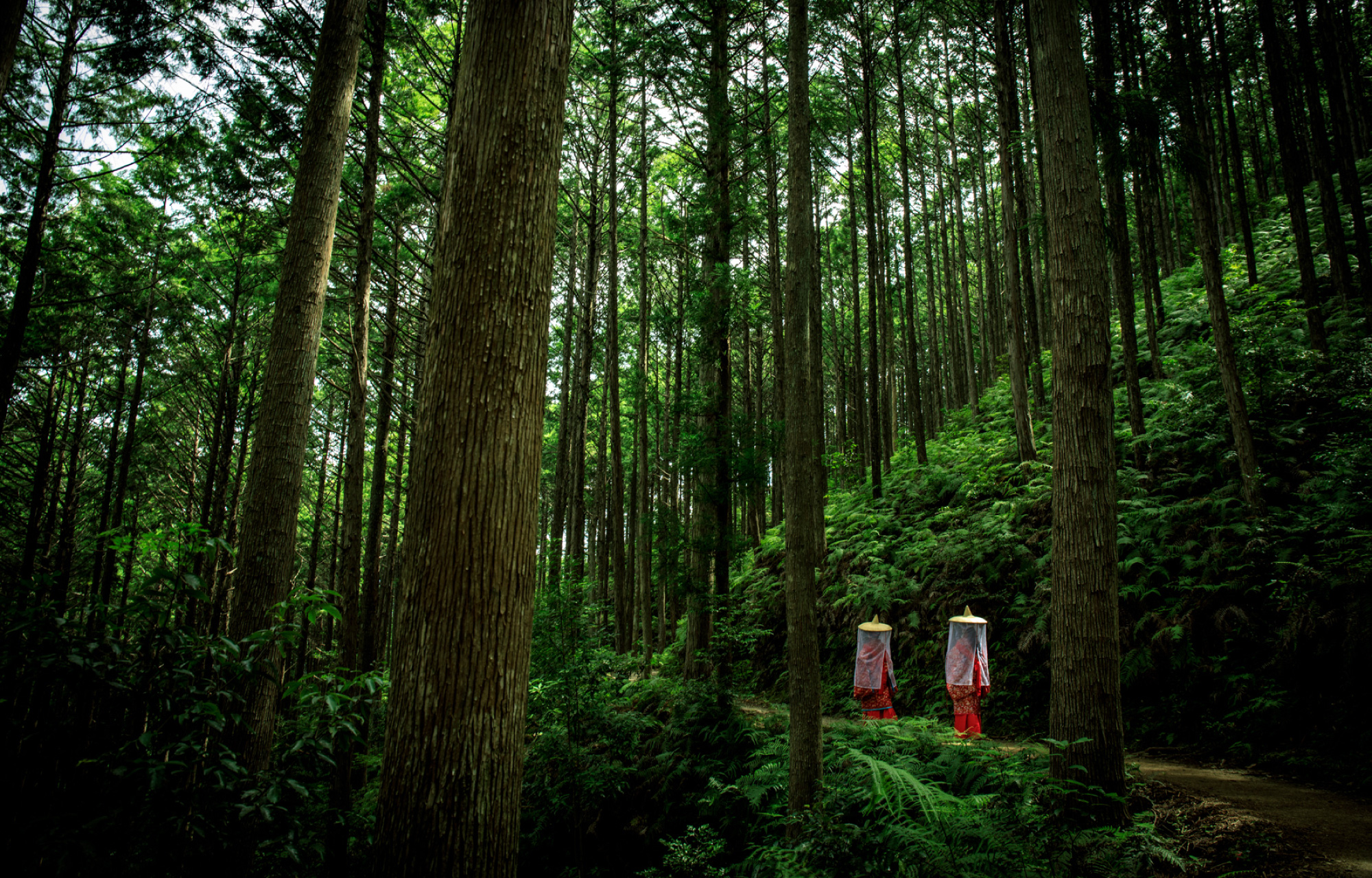
The main courses leading to Kumano Hongu Taisha Grand Shrine include the Kiiji Route course, which passes along the western coast of the Kii Peninsula and enters Kumano from
Tanabe and Shirahama, and the Iseji Route course, which passes along the eastern coast from Ise and goes up the Kumano River from Shingu.
Although the course from Ise has
some difficult sections, such as Magose-toge Pass, it follows the scenic Shichiri Mihama beach along the sea. It is characterized by the fact that it is not a sandy beach, but a
beach of pebbles carried from the upper reaches of the Kumano River, and the waves make a cool sound as they roll over the rounded pebbles that have been polished over time.
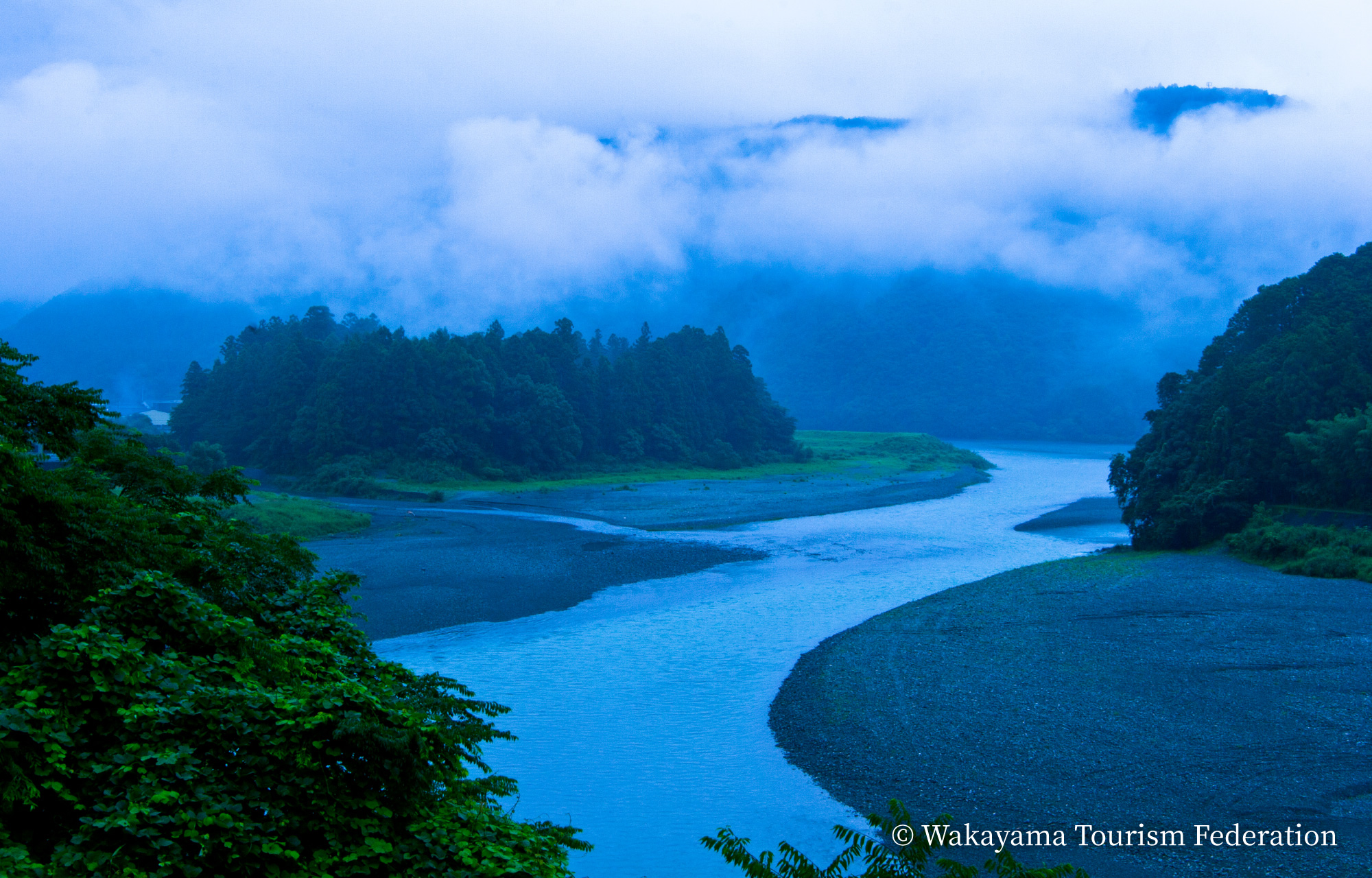
Shichiri Mihama Beach is home to the Hana-no-Iwaya Shrine, whose deity is the giant rock itself. It is said that Izanami-no-Mikoto, who gave birth to the god of fire and died,
was buried here, and even from the shore, the rock stands out in all its majesty. Ancient people believed that the gods were attached to the large rock, and the sight of the rock
standing strong and unchanging through the ages has been a vision of the eternal presence of the gods. Shichiri Mihama Beach is also home to other giant and oddly shaped rocks,
such as Shishi-iwa (Lion's Head Rock), which is called the "Japanese Sphinx" because it looks like a lion howling at the sea, and Onigajo (Demon’s Castle), which is said to be
the home of ogres.
After arriving at Shingu via the beach and visiting Kumano Hayatama Taisha Grand Shrine, pilgrims then follow the Kumano River into the mountains to
Kumano Hongu Taisha Grand Shrine. The Kumano River meanders through the cobalt blue color of the white gravel riverbed, and the mountains overlooking the river are endless with
bare walls of huge rocks and cascading waterfalls that look like white threads.
The Hongu Taisha Grand shrine, with its ancient and divine pavilions lined up side by side,
is a place where many pilgrims take a moment to relax and pray. Paintings of ravens with three legs can be seen here and there on the shrine grounds. The raven, called
Yatagarasu, is said to have guided Emperor Jinmu, who landed in Kumano, to Yamato, and has long been loved as a sacred bird to guide visitors along the way. A must-visit is
Oyunohara, a 10-minute walk from the shrine. In fact, until about 100 years ago, this was the Kumano Hongu Taisha Grand Shrine. Since the Kumano River is right in front of the
shrine, many of the shrine buildings were washed away during a major flood, and the shrine was moved to its current location on higher ground.
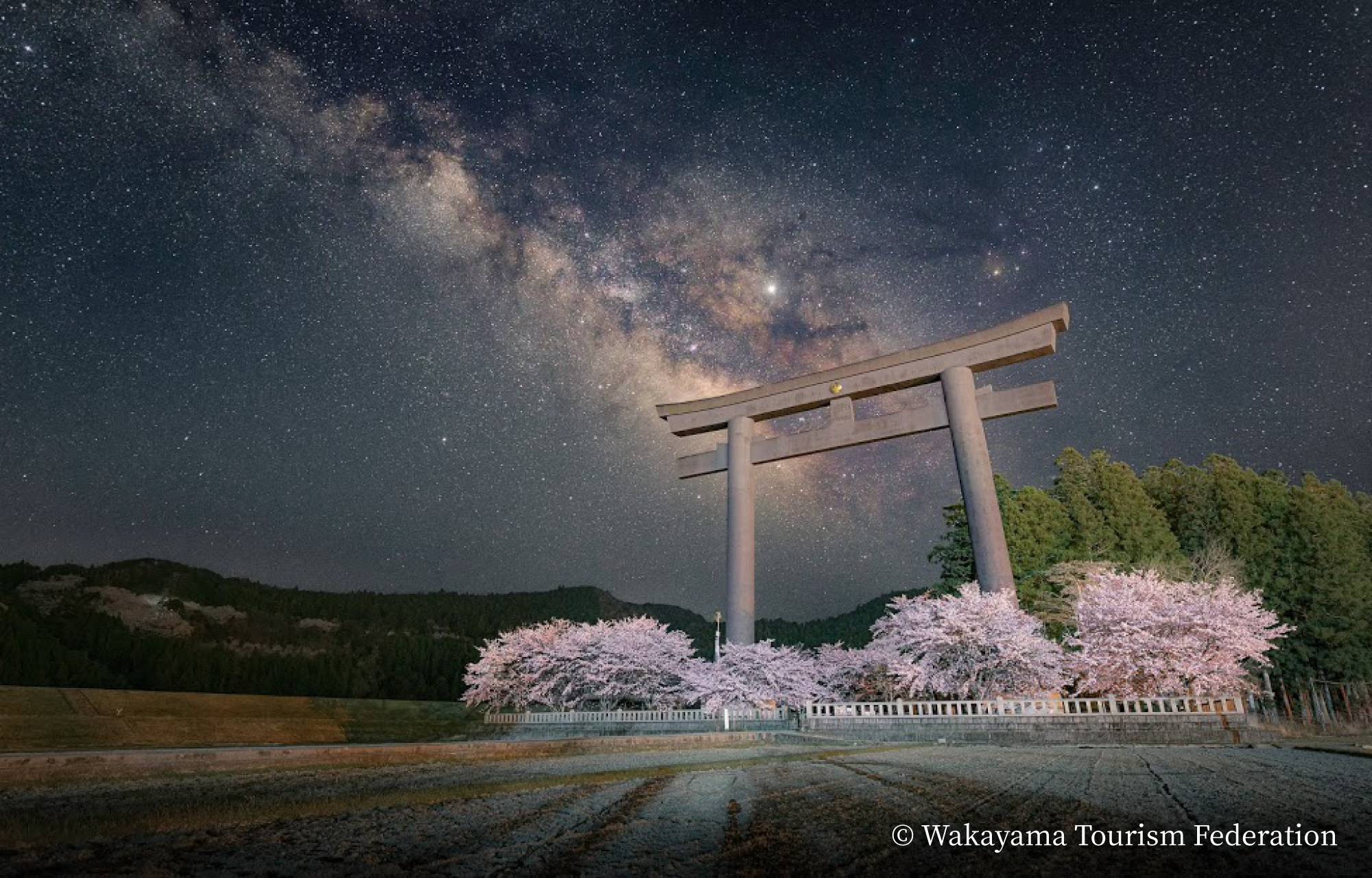
In the past, Oyunohara was located on a vast sandbank of the river, and everyone had to take off their sandals and cross the Otonashi River, a tributary of the Kumano River, in order to make a pilgrimage here. This was a natural way to purify oneself. Today, the Otorii (Grand Gate) stands tall, and beyond it is a quiet forest. Here is no longer crowded, and the sound of the wind rustling through the trees sounds like the prayers of people from the olden times.
Reborn here
Kumano boasts an annual rainfall of 3,000 millimeters, and the bountiful rain has slowly enriched its mountain forests. As a result, waterfalls can be found throughout the
mountainous area, but the Nachi WaterFall are known for having the greatest drop. Nachi WaterFall is another sacred place that is indispensable for Kumano pilgrims. As one climbs
the beautiful stone-paved approach to Daimonzaka Slope, the sound of the waterfall gradually begins to echo, and eventually the magnificent sight of the waterfall is revealed
between the trees. Looking up from the precincts of the Hirou Shrine, whose deity is the waterfall, countless white dragons appear to be falling one after another amidst the roar
of the waterfall. With my face moistened by the minuscule droplets of water, I could do nothing but marvel at the power of nature. I see, this what a god is.
It is said that
on a fine day, Nachi WaterFall can be seen from a boat on the sea in Kumano. It seems as if the spiritual energy stored in the Kii Mountain has become a waterfall and is being
discharged toward the sea, which is its outlet. Shugenja, who have made a pilgrimage through the mountains, often make this their goal. They are reborn like a limpid waterfall
and return to the mundane world.
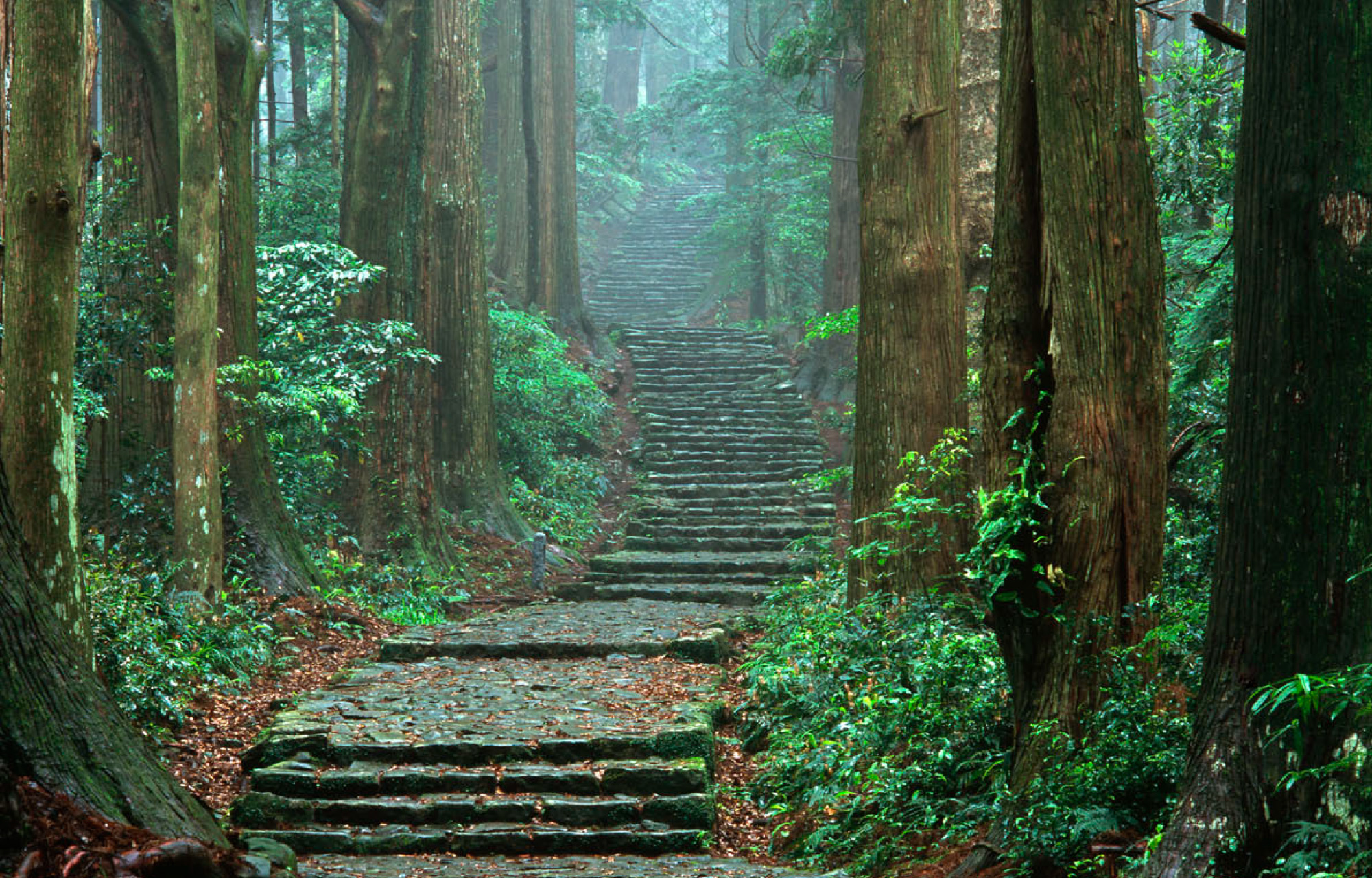
Kumano Nachi Taisha Grand Shrine and Nachisan Seiganto-ji Temple stand side by side in the immediate vicinity of Nachi Falls. Once a single entity, they were worshipped together as a sacred site for ascetic practices. According to legend, the temple was founded when a priest from India named Ragyo Shonin found and enshrined a golden statue of Nyoirin Kannon Bosatsu (Goddess of Mercy) in the basin of Nachi WaterFall.
The reason why Nachi has been a sacred place for the worship of Kannon Bosatsu since ancient times is according to the description in the Kegonkyō (Kegon Sutra), a Buddhist scripture. The Pure Land where Kannon resides is described as "Mount Fudarakusan in the South Sea", and various considerations were made as to where the actual location might be. Kannon Bosatsu, also known as the incarnation of water, is often enshrined near water. The famous Kiyomizu-dera Temple in Kyoto also enshrines Kannon at the base of the clear Otowa Falls. The Kannon Pure Land is located on the mountain of Nachi, where the holy water stored in the Kii Mountain slides down to the ground. People who believed in this came to this place in search of salvation.

From the steep approach to Nachisan Seiganto-ji Temple, the sea of Kumano can be seen in the distance. Between the mountains, a small pool of water appears as if it were wrapped in the palm of your hand and offered to you. The blackness of the sea is probably due to the fact that the Kumano Sea receives the Kuroshio current. Speaking of black, the black stone that is a specialty of Kumano City (Kamikawa Town) is called "Nachiguroishi" (Nachiguro stone) and is used as a handicraft. The black of Yatagarasu, the black of Kuroshio, and the black of Nachiguroishi. When we are born out of the womb, we also go through a black tunnel. That is why the color of Kumano is black.
Kumano Quiz QUIZ
Q: At the Kumano Nachi Taisha Shrine, visitors go through something to be "reborn". What is it?


